Located on Naval Air Station Pensacola, the National Naval Aviation Museum is one of the most impressive aviation museums in the world. With more than 150 aircraft, extensive historical exhibits, and immersive displays covering over a century of Naval, Marine Corps, and Coast Guard aviation, this museum offers something for everyone—aviation enthusiasts, history lovers, families, and casual travelers alike.
What makes this museum so compelling is how deeply it explores naval aviation. Instead of a handful of restored aircraft, you’ll find entire galleries built around major eras of flight: World War II carrier decks, Vietnam-era jets, Cold War advancements, early pioneers of flight, and even seaplanes the size of buildings. Whether you’re here for the engineering, the history, or simply the thrill of being near aircraft that helped shape the world, it’s easy to get lost in the experience.
This guide walks through the top exhibits, tips for planning your visit, the best places for photography, and a detailed section on catching a Blue Angels practice session—an unforgettable experience if you’re lucky enough to be in Pensacola during training season.
If you enjoy aviation museums, you might also like my visit to the National Museum of the United States Air Force in Dayton, Ohio.
- Location
- Museum Highlights and Must-See Exhibits
- Tips for Visiting the National Naval Aviation Museum
- Best Spots for Photography
- Watching a Blue Angels Practice Session at the National Naval Aviation Museum
- Know Before You Go
- A Personal Favorite: The EA-6B Prowler
- Nearby Attractions Worth Checking Out
- Final Thoughts
- Other Aviation Related Posts
This post contains affiliate links. As a participant in Amazon Associates and various affiliate programs, we are compensated when qualifying purchases are made through our referral links at no additional cost to you. Full Disclosure
Location
The National Naval Aviation Museum is located on Naval Air Station Pensacola on the western edge of Florida’s Gulf Coast. The base sits just southwest of downtown Pensacola, close to Pensacola Bay and only a few miles from the Alabama state line. If you’re already exploring Gulf Coast destinations like Perdido Key, Gulf Shores, or Pensacola Beach, the museum is an easy addition to your itinerary.
Because it’s inside an active military installation, civilian access can change based on security needs. It’s always smart to check the museum’s website or social channels for the latest entry requirements before heading out.

Museum Highlights and Must-See Exhibits
Blue Angels Atrium
This dramatic gallery features Blue Angels jets suspended in formation, giving you a sense of the precision and symmetry these pilots are famous for. Standing beneath them is one of the museum’s signature moments.
World War II Gallery
A must for anyone who loves classic warbirds. You’ll find iconic aircraft like the F4U Corsair, F6F Hellcat, SBD Dauntless, and TBM Avenger displayed with period artifacts, personal stories, and recreated environments that bring the era to life.
If historic sites interest you, you may also enjoy my write-up on the Yuma Territorial Prison State Historic Park.
Carrier Aviation Exhibits
The museum does an excellent job explaining the evolution of carrier operations. The reconstructed USS Cabot island is a standout, offering a deck-level look at what it was like to launch and recover aircraft at sea.
Vietnam War and Cold War Aircraft
Fast-moving jets, evolving technology, and the birth of modern naval aviation all show up here. Aircraft like the A-4 Skyhawk, A-7 Corsair II, and F-8 Crusader help tell the story of a rapidly changing era.
Seaplanes and Flying Boats
If you’ve never stood beneath a PBY Catalina or a PBM Mariner, prepare to be impressed. These massive aircraft dominate the hangar and offer a fascinating look at long-range patrol and rescue operations before jet engines took over.
Cubi Bar Café
This replica of the Cubi Point Officers’ Club in the Philippines was rebuilt using original plaques and décor. Even if you don’t stop for food, it’s worth stepping inside to see a slice of naval aviation culture preserved uniquely.
Tips for Visiting the National Naval Aviation Museum
Plan for at Least Half a Day
A quick walk-through is possible, but you’ll miss a lot. Three to five hours is a comfortable amount of time if you want to see the highlights without rushing.
Check Base Access Before You Go
Civilian access to NAS Pensacola changes from time to time due to security needs. Always verify current requirements on the museum’s official website or social media before you make the trip.
Explore the Mezzanine Levels
The second-floor walkways let you look down into the hangars and give you unique views you won’t get from the ground level.
Wear Comfortable Shoes
You’ll cover a surprising amount of ground, and most visitors end up exploring more than they initially planned.
Visit Early for Smaller Crowds
Morning hours often mean fewer people around the major exhibits and better lighting through the atrium windows.
Best Spots for Photography
Blue Angels Atrium
A wide-angle lens works beautifully here, especially if you want to capture the jets suspended overhead in formation.



WWII Gallery
Lighting is excellent, and the polished warbirds make for great close-ups and detail shots.








Mezzanine Walkways
These elevated angles help with full-aircraft compositions that are tough to achieve on the floor level.


Seaplane Hangar
The sheer size of the flying boats makes this area ideal for dramatic wide shots. If you’re shooting through glossy canopies or polished panels, a polarizer helps reduce reflections.


Watching a Blue Angels Practice Session at the National Naval Aviation Museum
One of the best parts of visiting the museum—if your timing is right—is the chance to watch a Blue Angels practice session. These are actual training flights, usually held on select mornings from spring through fall while the team is home in Pensacola.


When They Practice
Practice schedules vary by season, weather, and operational needs, but the Blue Angels typically post planned practice dates in advance. The museum often shares the schedule on its website and social channels, too.
Where to Watch
The viewing line behind the museum is the ideal spot. It offers an unobstructed view of the runway and airspace where the Blue Angels form up, maneuver, and run through their routines. It’s close enough that low passes feel incredibly immersive.











What to Expect
A practice session isn’t a full airshow, but it feels like one. You’ll see tight formations, high-speed passes, diamond rolls, and other maneuvers the team uses in performances. The pilots also repeat certain elements multiple times, which is perfect if you’re trying to capture the perfect shot.










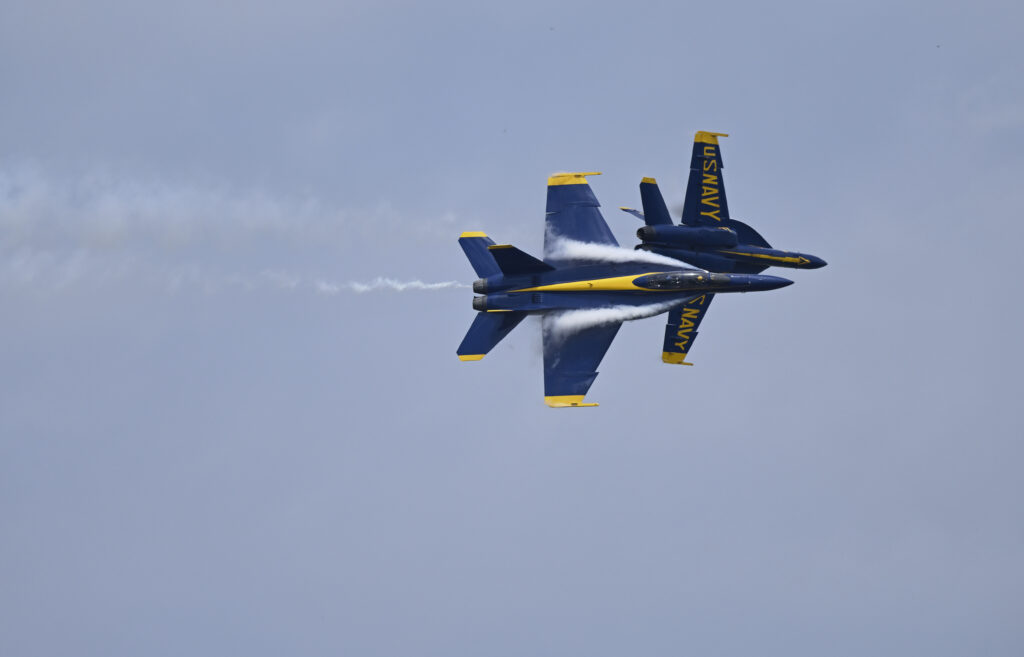
Photography Tips
- Bring a telephoto lens if you have one—something in the 300–500mm range works great.
- Use continuous autofocus and high-speed burst mode to catch sharp formation shots.
- Practice panning before the jets arrive; they move faster than most people expect.
- Arrive early if you want a spot along the front of the viewing area, especially on summer practice days.
Why You Should Plan Around It
Seeing the Blue Angels practice on their home turf is one of the most memorable aviation experiences you can have without attending a formal show. The combination of skill, power, and proximity makes it worth adjusting your schedule if practice lines up with your visit.
Know Before You Go
Before you head out, it’s worth knowing a few practical details that can make your visit smoother.
- Admission: The National Naval Aviation Museum is free to visit, which is impressive given the size of the collection.
- Location on NAS Pensacola: Civilian access can shift based on security conditions. Always check ahead.
- Parking: Free and generally easy. Arriving early makes it even smoother.
- Hours: Typically mid-morning through late afternoon. Confirm before you go.
- Bag Policy: Expect bag checks. Large bags may not be allowed.
- Accessibility: Fully accessible with elevators and wide aisles.
- How Long to Spend: Plan on at least three hours; more if you want photos or Blue Angels viewing.
- Best Days: Weekdays offer the lightest crowds, except on scheduled practice days.
- Best Time of Day: Mornings provide the best combination of lighting and quiet galleries.
A Personal Favorite: The EA-6B Prowler
After 20 years as an Airframe Mechanic in the U.S. Navy, aviation is still in my blood. So when I spotted the EA-6B Prowler on display at the National Naval Aviation Museum, it hit me harder than any other aircraft in the building. I spent a good portion of my career working on Prowlers, and seeing one here feels a bit like running into an old friend. The museum’s example is beautifully preserved, and standing beside it brought back a flood of memories from long days—and nights—on the flight deck.

It’s the kind of moment that turns a museum visit into something personal, where history and lived experience meet in a way that stays with you long after you leave.
Nearby Attractions Worth Checking Out
If you’re planning a trip to the museum, you’ll find a handful of other great places nearby that can round out your day in Pensacola or make for an easy second stop.
Pensacola Lighthouse & Maritime Museum
Located just a short distance from the National Naval Aviation Museum, the lighthouse offers one of the best views on the Gulf Coast. Climb the 177 steps for panoramic views of NAS Pensacola, Pensacola Bay, and the Gulf. It’s also a great place to photograph the coastline if conditions are clear.
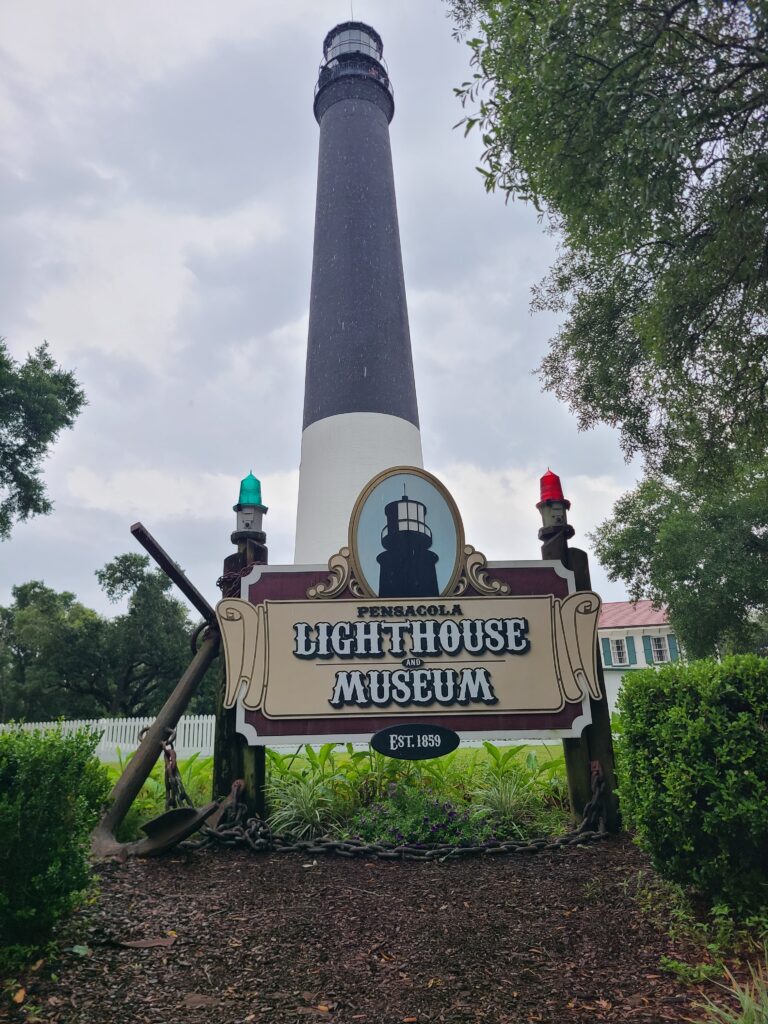
Fort Barrancas
This historic fort sits right on the base and offers a deep look at the coastal defenses that protected the Gulf during the 1800s. With tunnels, cannons, and sweeping bay views, it’s a nice contrast to the aviation-heavy experience of the museum.


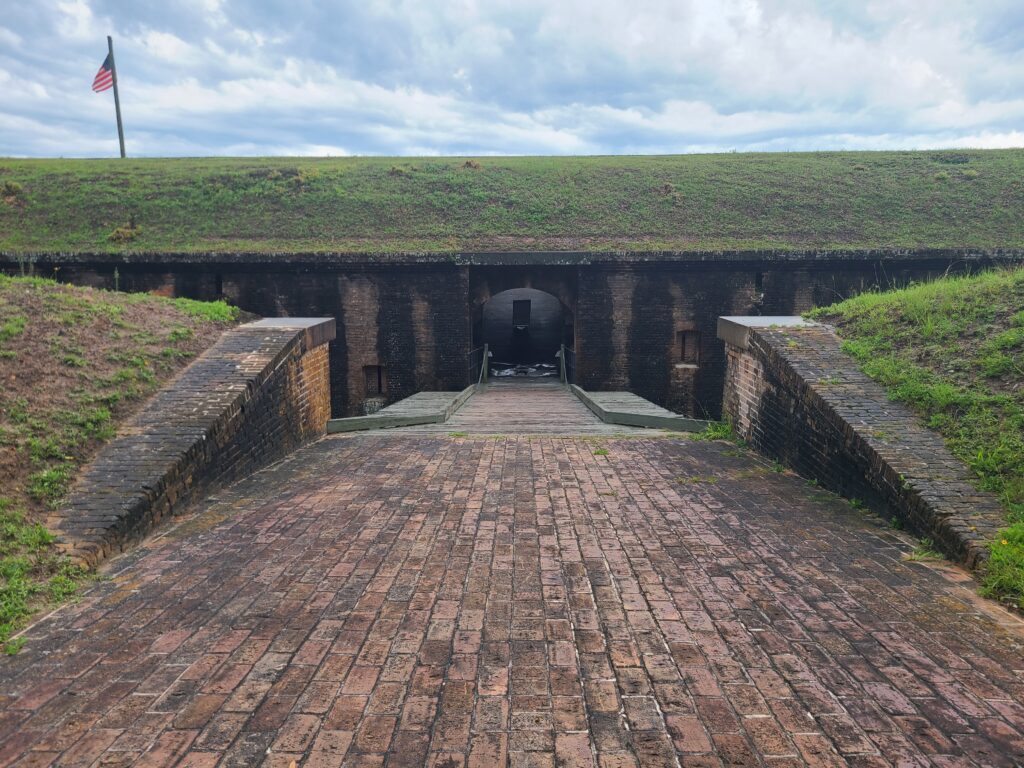
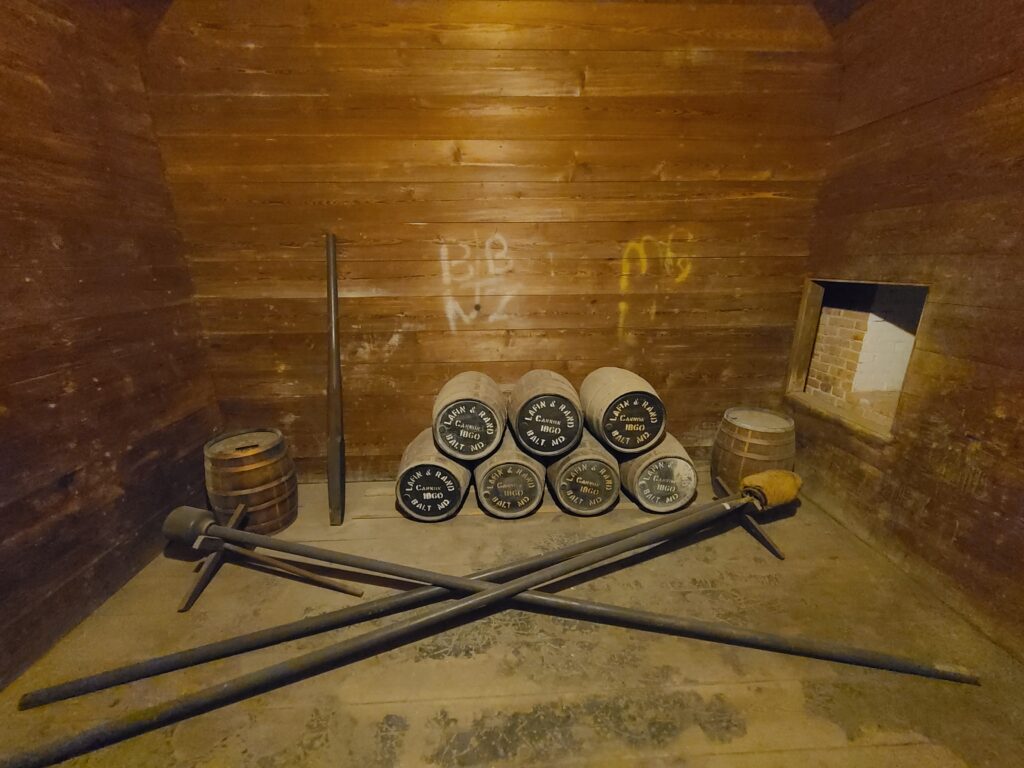
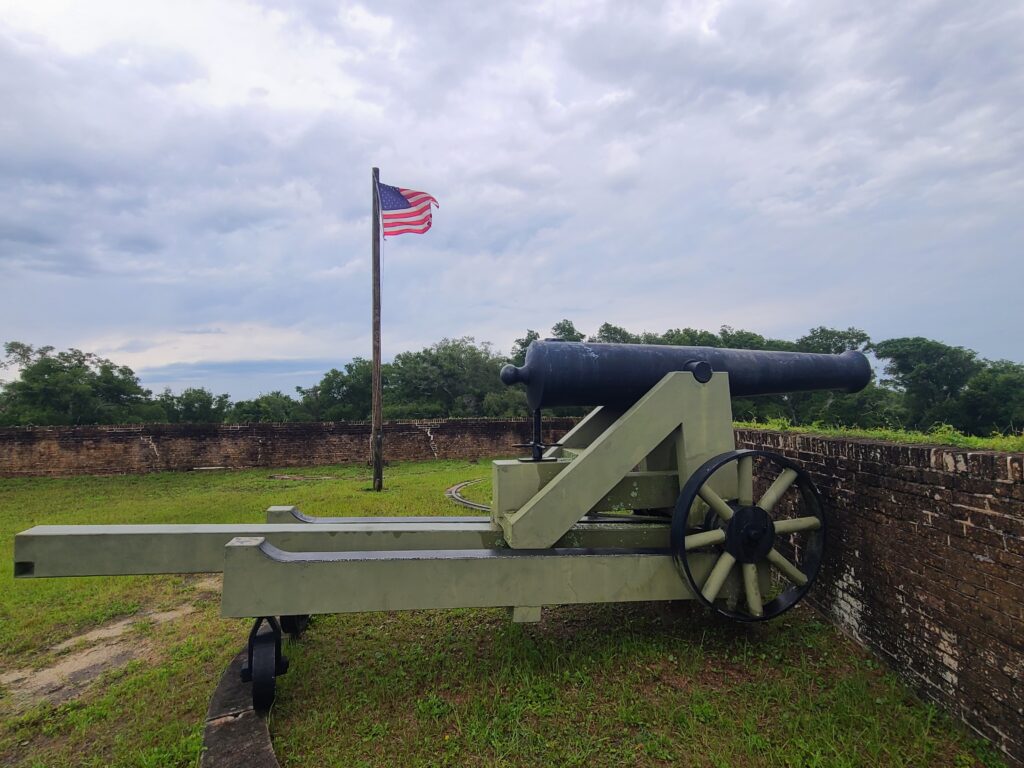
Barrancas National Cemetery
A solemn but powerful place to visit, especially for anyone with military service. The grounds are beautiful and well-maintained, and it’s a meaningful stop if you appreciate the history and sacrifice behind naval aviation.
Johnson Beach (Gulf Islands National Seashore)
If you’re ready for fresh air after several hours indoors, Johnson Beach is one of the most underrated stretches of sand on the Gulf Coast. Quiet, scenic, and perfect for a relaxing walk or sunset photos.
Downtown Pensacola
If you want food or a place to unwind afterward, downtown has plenty of restaurants, coffee shops, breweries, and historic architecture. It’s only about a 20–25 minute drive from the base.



Fort Pickens
Across the bay on Santa Rosa Island, Fort Pickens is another historic site worth exploring. It’s part of the Gulf Islands National Seashore and offers trails, wildlife viewing, and dramatic brick fortifications right on the water.
Final Thoughts
The National Naval Aviation Museum is one of the most rewarding aviation museums in the country. Its massive collection, thoughtful storytelling, and immersive exhibits make it an unforgettable stop for anyone with even a passing interest in flight or history. Whether you’re making a dedicated trip to Pensacola or simply exploring the Gulf Coast, the museum is absolutely worth adding to your itinerary. And if you can time your visit to catch a Blue Angels practice session, you’ll walk away with an experience that sticks with you long after you leave.
Have you visited the National Naval Aviation Museum? Share your favorite aircraft or experience in the comments — I’d love to hear what stood out to you.
Other Aviation Related Posts




If you’re looking to build your own home-based business like we have with this webpage, check out Wealthy Affiliate.
Wealthy Affiliate is an all-in-one platform that you can build your whole affiliate marketing business on. It combines training, software, and website hosting into one. This makes the whole process of starting an online business from scratch much easier, especially if you’re new to building a website.




